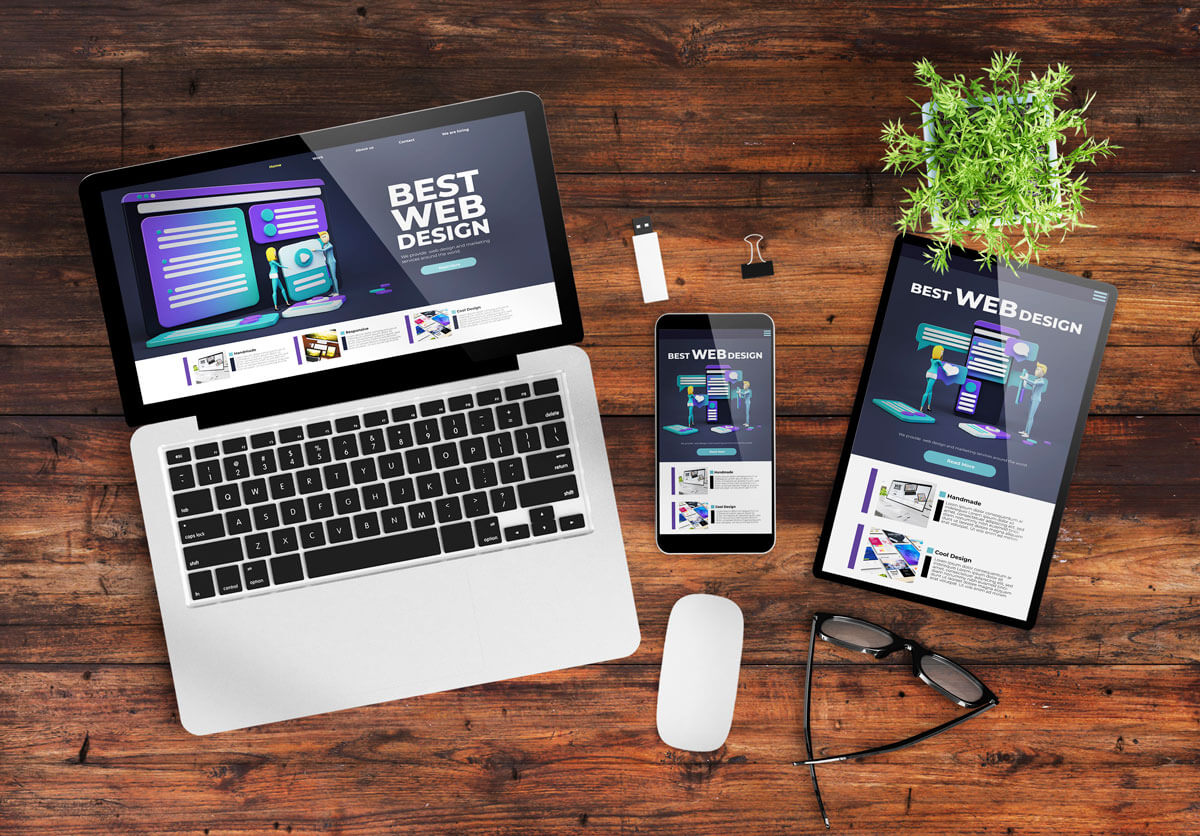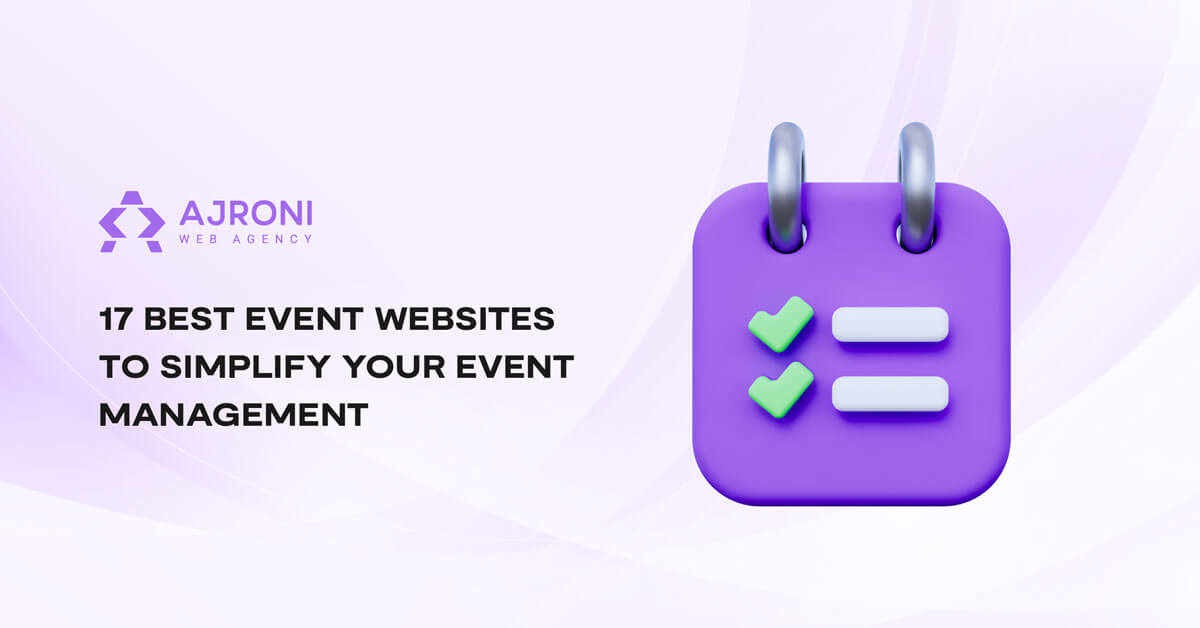Are you passionate about web design and want to turn your skills into a business venture? Owning a web design business can be exciting and rewarding at the same time, and we are here to help you get started. In this article, we will guide you through the essential steps to kickstart your business within a few days. Let's dive into it!
First Things First, Why Should You Start Your Own Business?

Set Your Creativity Free
Running your own web design business allows you to express your creativity and work on projects that align with your artistic vision. You can explore innovative design concepts while profiting from them, which is a win-win situation.
Independence anyone?
As we dive into the entrepreneurship wave with open arms, we’re sure everyone loves the idea of being independent in 2023. As a business owner, you’ll have the autonomy to make decisions and shape the direction of your business. You can choose the types of clients you want to work with, the projects you take on, and the overall business strategy.
Flexibility and Work-Life Balance
Following the independence concept, running your own business allows you to set your own schedule and work on your terms. You can create a work-life balance that suits your needs and preferences. Working in a coffee shop doesn’t sound that bad after all! Whether you prefer to work remotely, set your own hours, or have the freedom to pursue personal interests, starting a web design business equals more flexibility.
Strong Client Relationships
As a web design business owner, you have the opportunity to develop meaningful relationships with your clients. Working closely with them on projects promotes a sense of partnership and collaboration. This can lead to long-term client relationships, referrals, and a positive reputation in the industry.
Personal and Professional Development
Starting your own web design business, it’s a challenge that will make you go beyond your comfort zone. You gain experience in business management, marketing, client communication, project management, and more. This holistic growth enhances both your personal and professional capabilities.
How to Start a Web Design Business
Choose Your Niche
We know what you’re thinking: is choosing a niche in web design really necessary?
Well, whether you’re already an expert or plan to become one, marketers have proven that focusing on one niche brings lots of value to the target audience. In that case, it’s suggested to focus on only one niche and become a pro.
Let’s have a look at how this can serve your business:
Becoming an Expert in One Industry
It’s better to become proficient and specialize in one industry than to be a junior web designer in many industries. This will allow you to develop all your skills, study trends, and competitors like a pro within that niche.
Competitive Advantage
Being different is not just a personal trait; it’s a mindset revolutionizing the business world. And if you want to differentiate yourself, you must make the most within your niche. Your specialized knowledge and experience will give you a competitive advantage over more generic web design providers.
Targeted Marketing Efforts
Best marketing campaigns are those targeted. They speak directly to the audience, increasing their chances of becoming clients rather than maintaining just leads.
Repeat Business and Referral
Offering a specific niche can lead to increased client loyalty and word-of-mouth referrals. As you build a reputation within your niche for delivering exceptional web design services, satisfied clients will likely recommend you to others in the same industry.
Select the Design Services You’ll Offer

Best marketing experts always suggest researching the market and competitors before offering your services. This serves as a valuable guide to get you an idea of what web designers of the same industry are offering.
After deciding on what services you’re offering, create different levels of service packages based on the project’s complexity. For example, you could have basic, standard, and premium packages, each offering different features and pricing levels.
Break down each package into its specific components. Outline the services, features, and deliverables included in each package. For instance, a basic package could include a predefined number of web pages, a standard package may include additional features like a contact form or blog set up, while a premium package could offer custom design options, advanced integrations, and ongoing support.
Lastly, assign appropriate pricing to each service package based on factors such as the level of customization, the complexity of the project, the time and effort required, and the value provided. Ensure that the pricing reflects the quality of your services, the expertise you bring, and the value clients will receive.
This is how a good service package should look:

Screenshot of Hostgator’s hosting plan
Build Your Web Design Business Plan
A good business plan is the foundation of your future company. Let’s explore the key components to consider when crafting your plan:
- Define Your Target Market
- Identify Your Unique Selling Proposition
- Set Goals and Objectives
First, it’s important to know and psychologize your target audience. Your services won’t be for everyone, so understanding what your ideal potential clients want to see is a game-changer.
Highlight what you’re good at, whether this is branding and identity design, website redesign, maintenance, or something else.
Don’t be afraid to set short-term and long-term goals, as they will guide your journey from the beginning. We can’t stress enough how important having a clear vision is, especially for startups. Some goals can be:
- number of clients you aim to acquire
- revenue targets
- expansion plans
- marketing strategies
Setting measurable objectives will help you track progress and make informed decisions.
It’s All Centered on the Brand Name
Finding a domain name can be more challenging than it seems.
Will the name be easy to pronounce?
Will it reflect the purpose of the business?
Is the domain name available?
The struggle is real, but to make the process easier, here are our suggestions:
First, brainstorm keywords and concepts. Take some time to think and reflect; maybe go for a walk or sit in your favorite coffee shop. What is the purpose behind your brand? Write down all potential brand name ideas.
You can always use your name as the brand name as long as you’re considering solopreneurship or working as a freelancer. However, if your plans go beyond that, a business brand name is always more professional.
Generate a list of relevant keywords, concepts, and associations related to your business and services. Consider both literal and abstract terms that align with your brand identity.
Consult with people you know, professionals in the field, and even family members to get feedback.
Analyze your competitors’ brand names to get a general idea of how it aligns with their offer.
How to Find a Domain Name?
Finding an available domain name can be a challenge of its own. You might have many great ideas, but most likely, some will already be taken. This also depends on the domain suffix, whether it’s .com, .net, or another extinction.
Fortunately, there are many online tools to help you check the availability of the desired domain name and see if you can purchase them. After finding the right match, it’s time to continue with the next steps, such as hosting, building a website, and then marketing your services.
Set up the Legal Aspects of Your Business
While learning how to start a web design business you must remember to analyze one of the most important aspects, legal aspects. They depend on the type of your business, but generally, these are the steps to keep in mind:
Choose the Right Legal Structure
Consider options such as sole proprietorship, partnership, limited liability company (LLC), or corporation. Each structure has unique legal implications and requirements, so consult a legal professional to determine the best fit for your business.
Register Your Business
Research your jurisdiction’s registration process and requirements, which may involve filing a DBA name or formal entity registration. Proper registration assures your business operates legally and protects your brand identity.
Licenses and Permits
Research industry-specific regulations and local requirements. Obtain the required licenses and permits to comply with legal obligations and avoid penalties for your operations.
Protect Intellectual Property
If your business involves private information, like unique ideas, inventions, or creative works, it’s very important to protect them through trademarks, copyrights, or patents.
Tax Obligations
Understand and fulfill your tax obligations. Register for tax purposes, obtain the necessary tax identification numbers, and ensure compliance with tax laws relevant to your business.
Secure Insurance Coverage
Protect your business from potential risks and liabilities by securing appropriate insurance coverage.
Create a Strong Brand Identity

Each brand identity should be unique and represent the purpose behind the services offered. With this being said, there are details that contribute to effective brand building, such as your logo, color scheme, and typography throughout the website.
A logo is like a book cover; it immediately attracts visitors’ attention when they land on the website. But a good logo not only needs to be visually appealing, but it should also be memorable and reflect the essence of your brand. One important tip: Stay clear of any clichés.
Once you have a clear vision, brainstorm multiple options and experiment with typography,
color, and graphics until you find the perfect fit. Remember that your logo will be the face of your company, and it will be displayed on everything from business cards to ads, so take the time to get it right.
The Psychology of Colors
Choosing the right color for your website design is a tricky but fun aspect of color theories. It might seem like a small detail at first, but colors can positively or negatively affect your potential clients’ emotions and overall experience. For example, red represents passion and energy, while blue conveys trustworthiness and reliability. The right color scheme can highlight the unique qualities of your business and make your website stand out in a crowded market. For a business website, it’s suggested blue. However, take the time to research and experiment with different color palettes to find the perfect combination that will help your brand thrive.
Display Your Expertise
Highlight your specialized skills on your website. Explain the types of design projects you offer. Demonstrate your knowledge and passion for web design to build credibility with potential clients.
Incorporate a Blog or Resources Section
You can never go wrong with sharing valuable design tips, industry insights, and case studies to position yourself as a thought leader in your field. This content not only provides value to visitors but also helps improve your website’s search engine rankings.
Implement a Strong Visual Strategy
Use high-quality images and graphics that captivate visitors’ attention. Pay attention to layout, spacing, and visual hierarchy to create a good user experience.
Clear and Attractive Content
No one wants to read essays on websites, so make it easy for potential clients to learn what they need right away. Content must be engaging, simple to understand, and educative.
Content Information
Don’t forget to display your contact information on your website. Include your email address, phone number, and links to your social media profiles. Consider including a contact form for visitors to submit inquiries directly from your website.
Offer a Seamless Mobile Experience
Optimize your website for mobile devices to allow users to land on your website across all screen sizes. With the increasing number of people accessing the internet on their smartphones and tablets, a mobile-friendly design is important to reach a wider target audience.
Include Client Testimonials
Feature testimonials from satisfied clients on your website. Positive reviews and testimonials build trust and credibility.
Provide a Clear Call-to-Action
Guide visitors towards taking the desired action on your website. Whether it’s filling out a contact form, requesting a quote, or scheduling a consultation with a good call-to-action.
Continuously Evaluate and Improve
Regularly review the performance of your website and make improvements based on user feedback and analytics data. Monitor website traffic, user behavior, and conversion rates to identify areas for enhancement.
Find Your First Web Design Clients
Finding your first web design clients can be difficult at first, as the competition is high in this industry. But we’ve compiled a list of sources that might help you get the client quickly.
Online Freelance Platforms
Register and create profiles on popular freelance platforms like Upwork, Freelancer, or Fiverr. Browse relevant job postings and submit proposals to clients seeking web design services. Remember that you’ll not always get the first client within a few minutes, but apply continuously until you win your first collaboration.
Social Media Networks
Use the power of LinkedIn, Twitter, Facebook, and Instagram to display your work and build your professional network. Join web design groups and communities to connect with like-minded individuals and discover new opportunities.
Local Business Associations
Get involved with local business associations or even startups. Attend their events, join networking groups, and offer contact information to people who may require web design services.
Referrals and Word-of-Mouth
Encourage satisfied clients to refer your services to their contacts. Offer professional cards or referral programs to motivate them to recommend your web design services to others.
Online Portfolios and Directories
Create an outstanding online portfolio on platforms like Behance, Dribbble, or your own website. Optimize your portfolio for search engines to increase visibility.
Cold Outreach
Identify potential clients who may benefit from web design services and contact them directly. Personalize your outreach messages and highlight how your services can solve their specific problems or enhance their online presence.
Collaborate with Agencies or Marketing Professionals
Partner with marketing agencies, digital consultants, another web design agency or professionals in related fields who may require web design services for their clients.
Web Design Business: Challenges on the Road to Success
Starting your own web design business is a challenging experience, and those who have already succeeded in this can approve it. While the digital world offers endless opportunities and clients, it also means a tremendous amount of competition. To stand out from the crowd and create a successful business, you need to have a deep understanding of web design, a keen entrepreneurial spirit, and a strong network. Building a reputable brand, attracting clients, and delivering top-notch service requires dedication and perseverance. And it’s important not to lose hope just because you might be struggling at the beginning. Remind yourself the rewards of owning your business, being your boss, and having the freedom to work on projects you love make it all worthwhile. After all, doing what makes you fulfilled is always a rewarding experience!
In a Nutshell
Starting your own web design business will not succeed overnight, and it’s better not to have unrealistic expectations when it comes to that. However, as they say, “If you put your mind to it, you can accomplish anything,” and with a little dedication and hard work, you can make your business grow fast. So, why not give it a go?
FAQ
How do I find clients for my web design business?
Finding clients for your web design business involves a combination of strategic marketing efforts and networking. You can explore online freelance platforms, social media networks, and local business associations to connect with potential clients.
What are the essential skills and tools needed for a successful web design business?
To run a thriving web design business, it’s important to have a solid foundation of web design skills, including proficiency in HTML, CSS, and other relevant programming languages. Graphic design skills, knowledge of UX/UI principles, and familiarity with popular design tools like Adobe Creative Suite or Sketch are valuable. Good project management, communication, and client relationship skills are also essential for success.
How do I set pricing for my web design services?
Setting prices depend on the level of expertise, the complexity of projects, market demand, and the value you provide to clients. Research industry standards and competitor pricing to gain insights, but also factor in your unique value proposition and desired profit margin.




